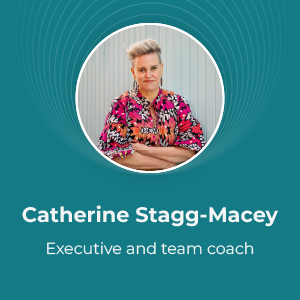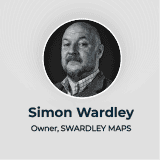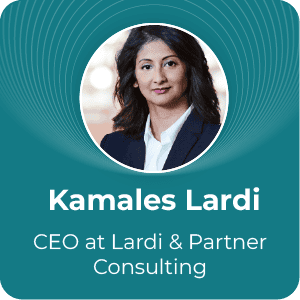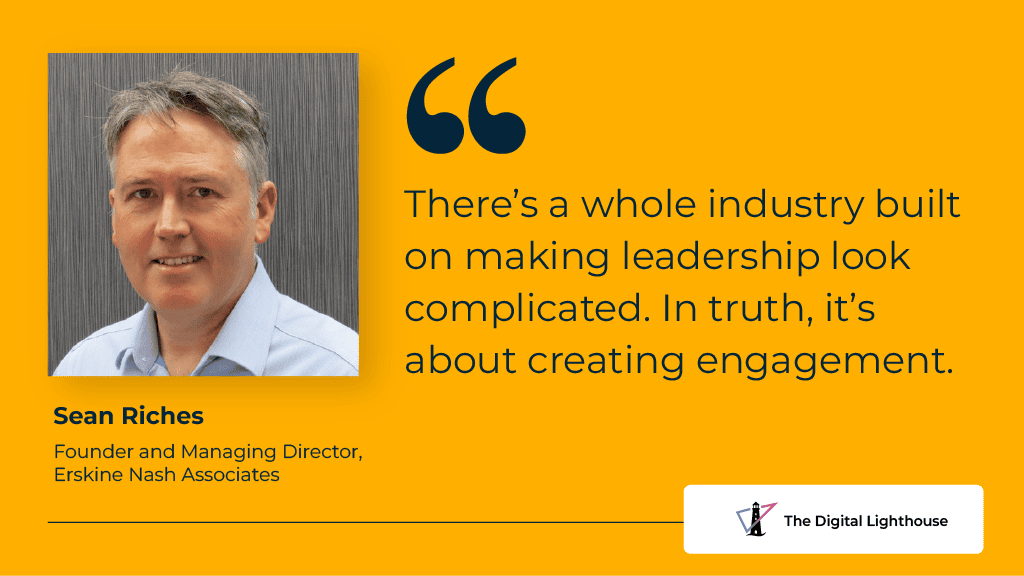
In this episode of The Digital Lighthouse, host Zoe Cunningham speaks with Sean Riches, founder and managing director of Erskine Nash Associates. Sean brings over two decades of experience in leadership, organisational psychology, and consultancy, working with clients across 20 countries including Vodafone, Oracle, Microsoft, and TCS. Through his company Erskine Nash, Sean helps teams and leaders take performance from “good” to “great” through clarity, alignment, and behavioural change.
Together, Zoe and Sean explore what makes a truly high-performing team and how leaders can measure, develop, and sustain team effectiveness over time. Sean shares insights from his 19 years of consulting, explains the importance of psychological safety, and introduces his CAB model (Clarity, Alignment, Behaviour) as a simple, evidence-based framework for improving team health.
Discover
- The five key traits that define high-performing teams (from Google’s Project Aristotle)
- How to measure both the thinking and feeling sides of team effectiveness
- Why clarity, alignment, and behaviour form the foundation of lasting performance
- How to overcome fear and complexity in leadership
- Practical methods for assessing and improving team dynamics using real-world data
- Why engagement is the ultimate goal of leadership
If you enjoyed this episode, please subscribe so you don’t miss future conversations. We’d also appreciate a quick rating and review on Apple Podcasts or Spotify — your feedback helps us continue delivering valuable insights.
Listen here
Watch here
Episode highlights:
- [03:00] How applied psychology led Sean to a career in leadership and team effectiveness
- [08:50] The five elements of a high-performing team
- [13:45] Why leaders need to assess both objective and subjective measures
- [19:40] The CAB Model: Clarity, Alignment, and Behaviour explained
- [21:10] How psychological safety enables honest conversation and growth
- [25:10] Why high-performing teams embrace constructive conflict
- [27:30] The single outcome all great leaders strive for: engagement
About our guests
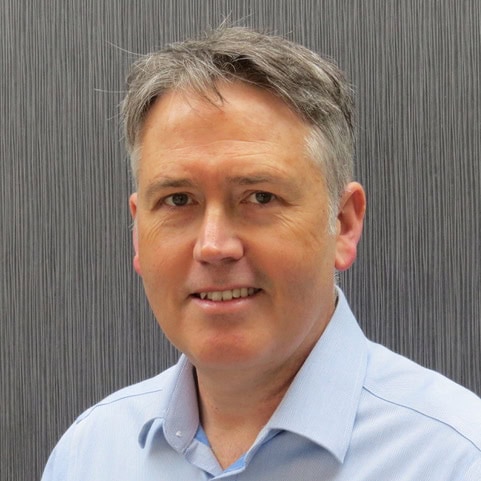
Sean Riches
Founder and Managing Director, Erskine Nash Associates
Sean Riches is the founder and owner of Erskine Nash Associates Ltd. Since 2007, they have helped organisations improve the effectiveness of their teams, and have many well-known clients in the technology space, both in the UK and abroad.
Sean has worked with over 90 nationalities and in over 25 countries, either working with intact teams such as boards, project teams and departments, or working with leaders at all levels to equip them with a highly practical toolkit of ideas to get the best from their own teams.
Sean’s own background is in international airports, mainly working at Heathrow and Gatwick. He led operational teams, managed projects and worked on transformation projects which introduced new processes and technology into aviation security.
Outside work, Sean is married with two sons, works part-time in inner-city youth development, enjoys hill walking and owns his own woodland which he is learning how to turn into a more valuable wildlife habitat.
Transcript
[00:00:00] Zoe Cunningham: Hello and welcome to the Digital Lighthouse, where we get inspiration from tech leaders to help us navigate the exciting and ever evolving world of digital transformation. I’m Zoe Cunningham.
[00:00:11] We believe that meaningful conversations can illuminate the path forward, helping us to harness the power of technology for innovation, scalability, and sustainability.
[00:00:22] In this episode, I’m delighted to introduce Sean Riches. Sean is the founder and managing director at Erskine Nash Associates. He and his team have worked around the world with many organisations, including well-known tech consultancies, helping clients improve team and leadership effectiveness.
[00:00:41] Sean’s varied career history includes financial services, international airport operations at both Heathrow and Gatwick, and in military logistics.
[00:00:52] Since moving into consultancy, he’s worked as an associate for several consultancies in over 20 countries. He’s worked with many well-known organisations, including Vodafone, Oracle, Microsoft, and Tartar. And then in 2007 he set up his own consultancy, which is Erskine Nash.
[00:01:11] In this episode, we’ll be exploring what it takes to create, maintain, and lead a high performing team from assessing a team’s effectiveness to uncovering the secret to taking it from good to great.
[00:01:26] Sean will share with us his hard won lessons and proven techniques that have helped hundreds of organisations to maximize team effectiveness. So, hello Sean and welcome to the Digital Lighthouse.
[00:01:38] Sean Riches: Thank you very much for having me.
[00:01:39] Zoe Cunningham: It seems that you have covered everything in your career. I think it’s, it’s one of the most exciting career histories I’ve ever seen.
[00:01:46] Leadership, operations, learning and development, and consultancy, and across a wide variety of organisations. So, could you maybe start us off by sharing some details about your journey and then how you came to start Erskine Nash.
[00:02:02] Sean Riches: So I’ve always been interested in subjects like leadership effectiveness, team effectiveness, organisational health and organisational effectiveness.
[00:02:10] And my, my degree a long time ago, Zoe, was in applied psychology. So it was about, with an emphasis on organisational psychology, but it was applied psychology. So it was, it was very sort of focused on pragmatic solutions and what actually works. And it was fascinating. It was an incredibly, incredibly interesting degree to do.
[00:02:32] So it was things like, I dunno, I’ll give you an example. The built environment. So if you design a terrace of houses, think about a lot of, a lot of old Victorian towns, terrace houses. If you put a little front yard in front of those houses, you build community because people go out and either clean their motorbike or do a bit of carpentry or something outside their front door. Whereas if it goes straight onto the street, people leave their door and walk away. So you’ve got that linger space. And that’s how neighbours meet each other.
[00:03:09] And it happened to me. Yeah. Two houses ago when we moved there, we were still building the house a bit and I was doing a bit of really bad DIY, out in the front garden. The front and and neighbours were walking past offering me work in their houses. They thought I was a carpenter.
[00:03:30] And that’s how I met so many of our neighbours. So it was, it was about the application of psychology to real life. And that’s, that’s how it all started. I then, as you say, had a fairly eclectic set of jobs, whether you can call it a career or not, I don’t know.
[00:03:47] But I ended up working in international airport operations, which is a fascinating, set of organisations to work in. 24-7, 365 days a year. And having worked at Heathrow and Gatwick for about 12 years in a variety of different roles, I had one final role, which started to knock on the door of technology and I led a change transformation program along with a lot of other people, by the way, putting new technology into aviation security.
[00:04:22] So when you go to the airport and you check in, and you go through security and your baggage goes through security, it’s fair to say that the processes and the technology that that you experience are very, very different from 20 years ago, 15 years ago, 10 years ago.
[00:04:39] Zoe Cunningham: Mm. Right.
[00:04:40] Sean Riches: And as a passenger now, particularly flying around the world for business, going on assignments. I can’t help but look at what they do and how are they’re doing it. And it’s almost like I’m still taking a big interest, but it’s, it’s massively efficient, and I assume much more effective than it was, you know, back in the day.
[00:04:58] Zoe Cunningham: Right? Yeah. In all kinds of small ways I imagine.
[00:05:01] Sean Riches: Yeah, absolutely. And, and, and people sometimes complain about the queues. Let me assure you that the airport person has no interest in keeping you in a queue. Apart from wanting you to be safe and secure, I can assure you that airports want you to go through the process as quickly as possible so that you spend more time spending money in the shops and restaurants in the lounge. There is a commercial… there is a commercial reason why airports don’t want to muck you around, and they want it to be as efficient as possible.
[00:05:29] So I worked on a transformation program, which combined process redesign new technology and getting people to engage with that and start using that stuff. And it was a fascinating assignment, but it was the last one I did in the world of airports before I decided to set my own business up.
[00:05:49] Zoe Cunningham: And what, and what was the driver then for you for setting up on your own? I guess, what was your vision for what you were setting out to do?
[00:05:58] Sean Riches: Well, I would love to tell you that, that that’s how it started actually was, it was a kind of, kind of feeling some discomfort. And going,, I don’t want to do any more of this. I want to do something else.
[00:06:09] And I had a conversation with an HR director at the time called Fiona, who was absolutely brilliant. And she did a bit mentoring and coaching with me, and it’s actually a tool that I’ve now developed and used with some of our clients.
[00:06:24] So, so maybe that would be of value. Imagine three circles, a Venn diagram and one circle is what you like and are good at. And, and generally those two go together. I think we can, we can agree that.
[00:06:37] One is, what makes a difference and one is what does the market want and will pay for, right? And where those three circles overlap is where your career sweet spot is.
[00:06:50] So you are, you are good at it and you enjoy it. It makes a difference. Which customers kind of need. And, but also we need purpose in our life and we need to feel that we’re making a difference in the world. But unless it’s a hobby, you’ve also gotta make a living. So therefore it’s got to be something that the market wants and will pay for.
[00:07:10] And she introduced me to this model and did me a huge favour in helping me corral my thinking. And I decided, right, I wanna set up a consultancy that helps people to take teams from wherever they are now to somewhere better.
[00:07:28] And we developed a business that does that in two ways. Sometimes we work with a whole team. So a week ago we were working with two departments in a tech consultancy that need to collaborate well, and we got those two teams together in the room and we designed a workshop to, to help them with that.
[00:07:47] The other way that we work is – yesterday, in fact, this, this week I was up in Leeds working with a, a group of leaders. Again, in a tech consultancy, and what we do is we equip them with the tools and techniques that we would use with their teams, but we train them to use it so they can go and achieve the magic second-hand.
[00:08:06] So it’s either team development, directly, or it’s leadership development, helping those leaders be better leaders of their own teams. And we’ve been doing it for, we are in our 19th trading year now.
[00:08:17] Zoe Cunningham: Yeah. Congratulations.
[00:08:19] Sean Riches: Yeah. So, there you go.
[00:08:21] Zoe Cunningham: Yeah. Well, that’s exactly, what, what we’re gonna talk about today, right? Is all of that nine, you know, 19 years worth of expertise and, and obviously what you brought with you when you founded Erskine Nash.
[00:08:34] So we’ve all worked in teams that worked, right? And then we’ve worked in teams that, that just don’t for a variety of reasons, right? So are you able to describe… I feel like sometimes it’s hard to even pin down what we mean… but what are the features of an effective team?
[00:08:56] Sean Riches: So there’s some very well known research that I’m gonna lean on here rather than, we’ve, we’ve got some of our own stuff that maybe we can talk about later on in terms of actually how you transform a team from okay to brilliant. But in terms of defining what an effective to high performing team is, Google did a load of work on this called Project Aristotle, a long time ago.
[00:09:18] And I believe, if I remember rightly, what they did was they looked at their own teams and they sort of said, well, who are the really good ones? Who are the okay ones? What’s the difference between them?
[00:09:27] And I’m looking down at my notes here ’cause I want to get this right. Yeah. Anyone can, anyone can look this up, right? And they suggested that there were five factors. And the first one, and the most important one is Psychological Safety, which is a phrase that gets banded around.
[00:09:41] But basically it means that individuals in the team feel confident that if they have a, a new idea, if they have a, something sort of, bit of a, a different creative idea. If they maybe disagree with the group think, that they can speak up without fear of punishment or ridicule and offer, you know, that different insight, it doesn’t always mean to say they’ll get their way.
[00:10:07] But people need to feel, that they are safe to perhaps even be slightly oppositional now and then up to a certain point. So Psychological Safety apparently was the biggest differentiator between okay and brilliant.
[00:10:23] And that makes sense. I mean, human beings tend not to perform well when we are really scared. Particularly in complex jobs. If it’s a simple job, actually a bit of panic or what have you can really help give you the adrenaline.
[00:10:35] Zoe Cunningham: Packing your suitcase before you get on the plane that you know.
[00:10:38] Sean Riches: Yeah. But actually, if we are looking for people to be collaborative, to be creative, fear is not a great context to do that, and we don’t tend to perform well.
[00:10:50] So the second one is structure and clarity. And different people, you know, have different needs. I’m quite a structure and clarity kind of guy, whereas some of the people I work with on my team, they’re a bit more kind of freeform, you know, which is great and you need that diversity. But the degree to, it says here, the degree to which you know, what’s expected of you, how to do it and what the consequences will be.
[00:11:14] What is expected of you? What do, what do they want me to do, right? And do I kind of have a fighting chance of knowing how to do it, how to go about it? Possibly not scripted to an Nth degree, which is a bit boring, but I kind of know what my direction of travel is. That’s the second one.
[00:11:31] The third one is dependability. And this is the degree to which members can rely on colleagues to do their bit and do it well. And this is about dependability, interaction, generally in a team it’s not individuals doing their own thing, they rely to some extent on other people.
[00:11:48] In an Erskine Nash program or workshop, there’ll be at least two of us, if not three of us normally taking turns to do different sessions, and I need to know that the person I’m working with is gonna do a great job in their session and finish on time and hand over to me to then do my bit and so on, and, and it’s great working with people you can depend on.
[00:12:10] The fourth of the five is meaning. And I think that’s become increasingly important with, as generations have come and gone. So, I’m a cynical old Gen Xer, born in 1966, and I, I guess I didn’t expect a lot of meaning and purpose from my work. but my sons…
[00:12:31] Zoe Cunningham: And, yet here you are. Yeah, yeah.
[00:12:32] Sean Riches: Yeah. Gen Alpha. I’ve worked with, you know, Gen Y Millennials, Gen Zs, and now we’re sort of looking at Gen Alphas. I think younger people, understandably don’t just want meaning, but they kind of expect it as well. So meaning is important, and feeling that the work that you do or the result that it creates has some real meaning in the world. It’s doing some good.
[00:12:58] And then the fifth one is impact. And that’s about the degree to which you see that what you do matters to others or to the bigger picture. So I guess Purpose is it matters to you. Impact is it actually matters to others.
[00:13:15] So those are the five things that Google said differentiates between great teams and okay teams. And therefore as leaders of teams, we need to kind of make sure that, that that’s there and that’s being provided.
[00:13:30] Zoe Cunningham: Right. And so is there a way to, to kind of assess this in a more formal way? I feel like I know a good team when I see it and I know a terrible team, you know, when I see it, how, how can, how can we… Can we more formally assess it than that?
[00:13:45] Sean Riches: It is something we do all the time. Generally speaking, if a client asks us to work with a team over a period of time, and we’ve got clients who, who we’ve worked with over sort of five years, to, to turn a frankly underperforming team into an award-winning team.
[00:14:04] And by the way, the best bet for us is when the chief executive of that team that gets headhunted to go and do it all over again in a bigger organisation with a bigger budget, that’s even better.
[00:14:15] So, so yeah, one of the first things we’ll do is try and get an assessment of, okay, what’s the start state? How effective or ineffective is that team right now? And we then, as we work with that team over a period of time. Take that measure again and again and again. And reassess and reassess. Partly to show a return on investment.
[00:14:37] Zoe Cunningham: And make it clear what you’re, it’s, it’s… I love how all of these tools that you’re discussing all feed into each other and that your three circles for what should you do?
[00:14:51] Sean Riches: Yes.
[00:14:51] Zoe Cunningham: Is there’s so many analogies with these five things that, that teams do, and actually it strikes me that taking these measurements, it’s about knowing what you are trying to achieve as a team. What’s expected of you to, to improve your performance?
[00:15:05] Sean Riches: And when you measure and assess the effectiveness of a team, whether you are doing it at the start of a, a program of improvement or through, you know, as you go through it. I think it’s really important to measure in two different ways because the world is full of thinkers and feelers.
[00:15:21] And thinkers like me will be interested in objective measures. You know, what’s this team here to, to produce? How many of them is it producing, how much money is it making? How many cans of beans are coming off the line? Whatever it is. Yeah.
[00:15:33] But about half the world are feelers. And they will sense things in a completely different way. They will… as you said, you know, when you work in a team that’s really working, you just feel it. You just know it. You haven’t measured anything in an objective sense, but it is important to do both.
[00:15:49] Thinkers do feel, by the way, and feelers do think it’s just a question of where you go first. So we will, we will attempt to measure in a very objective way, the outcomes that are being produced by a team.
[00:16:04] And in most organisations, hopefully that’s not too difficult. They’ve got objectives, they’ve got measures. We can, we can say, right, you know, how much of it are you doing? How well are you doing it now? But we then engage with team members and say, how does it feel to work here? And we’ll get some more subjective measures, but they’re still very valuable. Still very valuable because as you say, we all, even the hardest thinker, and I’m probably at that end of the spectrum, you’re absolutely right. You can still feel it, you can still feel the atmosphere, and it’s a question of trying to turn that into as objective a set of measures as possible, and then tracking it over time.
[00:16:41] I mean, partly, you know, from a commercial perspective, we’ve got to prove a return on investment, but you can do this in your own teams. Yeah.
[00:16:48] Zoe Cunningham: But you’ve gotta prove that it’s worth doing.
[00:16:51] Sean Riches: Yeah. Yeah, absolutely.
[00:16:53] Zoe Cunningham: So, yeah, so I’ve got a couple of questions that I’d like to ask about, like, what is feasible. So I think that, you know, I’ve definitely had challenges in the past of, of managing teams that are doing okay so they’re, they’re not you know, knocking everything out the park, but you know, they’re, they’re getting the job done. Yeah.
[00:17:13] And I think there’s always a risk that, you know, you, you pull on one thing and something else falls out. You know, like, can, can you take those teams to Great without risking losing what you’ve got already? Yeah. And also how long does this kind of process take?
[00:17:29] Is it, you know, we come in, we write our objectives up on, you know, we write these five points up on the board. We say, off you go, this is what you’re doing. And then a month later, boom. Or is it, as I think you mentioned earlier, something where you need to spend years and years, like honing and reinforcing? Yeah.
[00:17:49] Sean Riches: So, let’s, let’s talk about the fear problem first. We definitely have worked with a lot of people who are team leaders, in some way or other, and they, they feel that they need to take action, that this team needs to be improved, but they’re kind of really scared to take the first step, and they’re even afraid that if they do it, they’ll make it worse. They’ll upset people. And a big part of what we’ve done over the last 18 years is particularly when we’re working with leaders, when we’re doing leadership development, is say, hey, you know what? This leadership thing is not as mysterious and scary as people make out. I think there’s a whole industry out there who have a vested interest in making leadership look incredibly complicated.
[00:18:43] And you get people who go and buy a book and then they read it and they go, right I think I know what I’m gonna do now. I’m gonna base my approach on this book, but I’ll just read another book first. And then they read another book and then they read another book. Right? And in the end they’ve got so many different ideas. ‘Cause each book is, you know, tries to be unique and it gives you lots of different ideas and it’s like it’s bewildering.
[00:19:05] And what we try to do is lift the veil. We sort of pull the curtain back and say, you know what? I’m not saying leadership is easy. I’m not saying leadership is easy, but you know what? It is not as complex and it is not as scary as some people make it out to be.
[00:19:20] Let’s keep it simple. Let’s keep it pragmatic. Let’s start with baby steps, and there’s certain things that you can do that always deliver a great result. Keep it simple and, and the way that we generally recommend is to look at three different things: clarity, alignment, and behaviour.
[00:19:43] We call it the CAB model, CAB, for obvious reasons. Okay?
[00:19:46] Zoe Cunningham: Yep. Yep.
[00:19:47] Sean Riches: Yeah. And by the way, those are the three subjective things that we measured. Remember I said about measuring things objectively, like, you know, what’s your profit? What’s your margin? How many cans of beans are coming off the line? Yeah. How are you doing compared to another team that’s in the same game? Get some objective measures.
[00:20:04] The subjective things we measure are clarity, alignment, and behaviour. So we’ll set up a, a, a very simple system of zero to 10 and say to people in this team, rate this team’s health in terms of clarity. And by clarity we mean do you think that everybody in this team has a common shared understanding of fundamentally what we’re trying to… what we’re trying to achieve here?
[00:20:28] A 10 would be an almost scary cult-like thing where everybody almost just parrots the same words, which is… and that means that a 10 isn’t a great score. Zero is clearly a disaster. It’s like, I didn’t even know there was an objective. I thought I just turned up to work and did stuff.
[00:20:46] Most teams will say, it feels like about a 7, 6, 7, 8. I in. I think we’re all kind of going for the same thing, but I couldn’t be totally sure. And we will take some action over a period of time to try and move that score to the right, maybe not to a 10. We’re not trying to create a cult, but we’ll try and move it and we’ll remeasure, we’ll, we’ll ask people every six months or so, how does it feel now? How does it feel now?
[00:21:12] One of the most interesting things is you get a team to all contribute their scores. We do it confidentially with a QR code. And we collect all the data and we go…
[00:21:20] Zoe Cunningham: Because of psychological safety.
[00:21:22] Sean Riches: Yeah, absolutely. And you get out liers. You go, no, I think it’s a two out of 10. And most people are like a six or seven. But you, you, you don’t wanna say, Hey Bob, why, why is it a two? Because you know… He gave his score, he gave his score confidentially. But you get an average.
[00:21:37] You then say, okay, everybody write if you’ve got people face to face, ’cause sometimes we do this online, but if it’s face to face, we say, okay, write down what the objective is.
[00:21:44] You gave it a score of eight out of 10, write it down. And you collect 20 different post-it notes, and then you ask people to read them out and you go, Hmm, sounds more like a four. As in people are over the place.
[00:21:55] And the problem is that a lot of leaders, and I’ve been guilty of this myself in the past, is think we think, right, all we need to do is get the team together, tell them what the objective, the mission, the target, the purpose is. And then my work here is done. Right. We will now be at a nine outta 10 with no further Exactly. No further effort on on my part.
[00:22:12] Zoe Cunningham: We’ll do it once. We’ll tell everyone once.
[00:22:14] Sean Riches: Yeah. Yeah. Just once a year. Put it on a slide, maybe stick it on a poster on the wall. That would be good. And then everybody will be mega clear all year.
[00:22:22] And it turns out that ain’t the way you get clarity. You need much more interaction and discussion. People need to make it makes sense to them. They need to engage with it at a hearts and minds level and we help leaders to do that.
[00:22:38] So that’s one thing we do. The other one is alignment. and alignment is not the same as clarity. A lot of people use the words interchangeably, but in our world, alignment is about how you and I are aligned with each other or not, on the journey.
[00:22:55] So Zoe, if I said to you, let’s meet on Platform 5 at Kings Cross Station next Friday. You’ve probably been to King’s Cross Station,
[00:23:05] Zoe Cunningham: Right. Yes.
[00:23:05] Sean Riches: You can imagine it. Platform 5. That wouldn’t be difficult to find. Next Friday, we know when that is. It’s a week today. We’ve got really high level of clarity about the outcome, the target, the mission, the thing we’re trying to achieve.
[00:23:19] But if you and I try to rush out that door behind you or this door over here, at the same time, given that it’s a small door and there were two of us, there’d be a massive amount of friction between us, we’re getting in each other’s way.
[00:23:32] Zoe Cunningham: Yeah.
[00:23:33] Sean Riches: And that’s what we mean by alignment. So it would be much better if you went first and then I followed you, or, or the other way around. And we, we need to, we need to align our plans and our methodology to achieve their objective.
[00:23:45] So achieving clarity is not enough. And in most organisations, most teams, it’s actually the alignment that’s your problem.
[00:23:54] Zoe Cunningham: I can definitely see that if you’re thinking about a software project that, yeah, you can often all know what you’re building, but actually who’s building which bit when is one of the largest logistical challenges that you have in terms of so many people doing so many complex parts of one piece of software.
[00:24:14] Sean Riches: And it all needs to be tied together in as friction free a way as possible. Mm-hmm. But you get friction between individuals, you get friction between sub-teams, you get friction between teams, you get friction between different organisations. And as you know, on a really big tech project, you might get multiple consultancies all doing different things for a client.
[00:24:34] And let’s not even talk about the friction between the client and, and some of those providers. You know, we’ve all, we’ve all seen it. So alignment is really important as well, and it’s often the lowest scoring element. It’s the one that people go, yeah, we’re pretty good on clarity, but yeah. Now I know what alignment means. Yeah. Houston, we have a problem with that if, if they’re being honest.
[00:24:56] The third one in the CAB model clearly begins with a B and it’s Behaviour. And we say to people, look, a really high score score on behavior doesn’t mean everyone’s happy. If you show me a happy team, and I’ll show you a team that’s not having honest conversations, right?
[00:25:11] A high scoring behaviour means you and I can have disagreement. It’s even welcomed. That’s diversity of thinking, but that when you have a view and I have an opposing view, it’s welcomed, it’s dealt with an even in an adult way. Psychological safety allows me to do that, and the way we we behave with each other is respectful and it doesn’t regard conflict as scary. It regards it as a necessary, you know, process, a necessary thing.
[00:25:44] Clearly a low score on behaviour is everybody’s throwing their teddies out of their pram and are behaving really, really badly. So we will ask people to rate the health of their team a number of times in terms of clarity, in terms of alignment, and in terms of behaviour. But actually anybody in the tech industry will know how to create a QR code, put it on a slide, ask those three questions, and get their teams to, to give those those scores and, and then have a discussion about maybe, well, why is it, why is this one high? Why is this one low? Can you give me an example of why you think this one is lower and so on?
[00:26:20] And it’s very revealing and it tells you what your agenda for change is. That’s the way we go about it.
[00:26:28] Zoe Cunningham: All right, so we could talk about this topic, all day because I feel like we’ve just scratched the surface. And a lot of the time it’s great to be able to map out these, principles, but the detail of implementing them. And unfortunately though we’ve run out of time, so I think you’re gonna have to come back and tell us some more detail, or, or certainly where can people find out more about, about your thinking on team effectiveness.
[00:26:58] Sean Riches: So obviously we have a website, of course we do. And they can find that, ErskineNash.co.uk. and, and we are very open to calls and conversations and emails and, and whatever as well. We also post on LinkedIn, probably not as much as we should. It has to be said.
[00:27:14] Zoe Cunningham: Right, like all of us.
[00:27:16] Sean Riches: But if I was going to recommend a book for people to read, right now about leadership. I would go with a guy called Matt Tenney, an American guy, his latest book is called Inspire Greatness.
[00:27:31] I’ve met Matt working in America. He is a great guy, and the thing I like about him is he simplifies it down very pragmatic, very simple. And one thing he says in that book that I absolutely love is: the outcome of leadership is creating engagement.
[00:27:50] That if, if you are struggling with the concept of leadership and what am I trying to achieve here as a leader, effectively you are trying to create engagement in the hearts and minds of the people that work for you.
[00:28:02] Because if they’re engaged, they’re happy, they’re effective, they’re productive. All of the frictions tend to be, you know, the alignment problems tend to be sort of worked through. That’s what leadership is all about. It’s creating engagement. If you’ve got an engaged team. You’re probably being a great leader if you get a sense that they’re not engaged. You have work to do.
[00:28:27] Zoe Cunningham: Fantastic. So a word of a word of wisdom to leave with everyone at the end there. Thank you so much Sean for joining me on The Digital Lighthouse and sharing your experience to help us shine a light for others.
[00:28:40] This Digital Lighthouse episode was edited by Steve Folland and produced by Patrick Anderson. The theme music was written and recorded by Ben Baylow.
[00:28:49] A huge thanks to our sponsor Softwire for their continuing support from the inception of the show in 2019 to the present day.
[00:28:56] If you love the podcast, please let us know with a rating and review on your platform of choice. We are always looking for feedback to ensure that we are making the best show possible.
[00:29:06] And if you’d like to take part, please drop us a line: the [email protected].
[00:29:12] You’ve been listening to The Digital Lighthouse with me, Zoe Cunningham. Thank you for sharing your time with us and stay safe on this wild technological ride that we’re all on.

